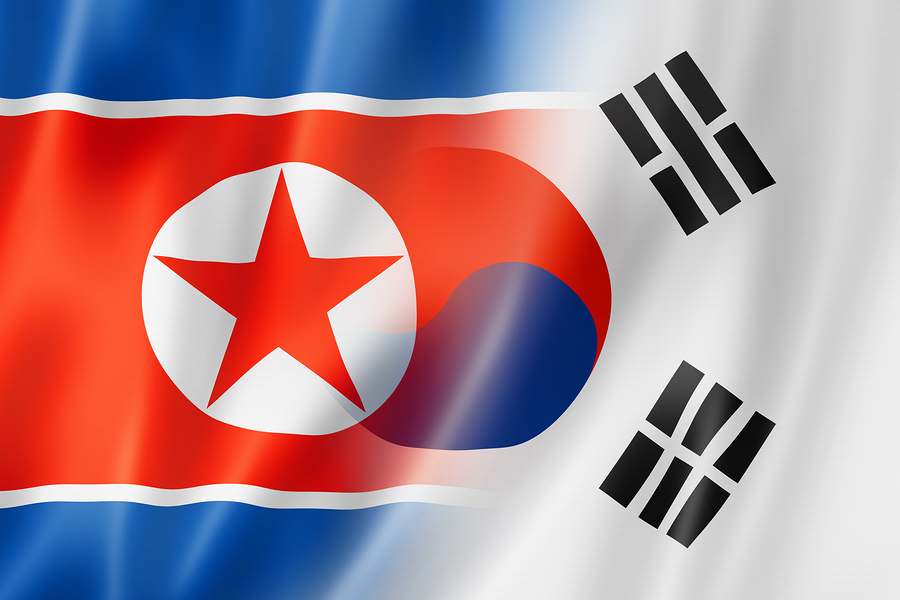The Korean Language: The Key Differences Between North and South
There are two Koreas, namely North Korea and South Korea, much in the news recently, of course! They share a common language, which is Korean. There are however a few differences between the North Korean and South Korean languages, both the spoken and written word.
The first key difference is in the South Korean language, where the formal name used for the language spoken by its citizens is Hangugeo. In North Korea, it’s called Chosŏnŏ.
GETTING IN TOUCH WITH US
Blog - Getting In Touch With Us
Differences in the Korean Vocabulary
Do north and south korea speak the same language? The language spoken in South Korea is basically a Seoul dialect, and the speakers often do use words borrowed from English. In contrast to this trend in North Korea, its leaders have encouraged its citizens not to use any borrowed words, so the Pyongyang dialect is mainly in use. Sometimes, North Koreans include words from other languages, and Russian, in this case, is the preferred language.
Differences in Written North Korean and South Korean Languages
Anyone who is learning to write Korean is sure to notice that both in North and South Korea they use exactly the same letters, which is called “jamo,” but they might not look quite the same. For example, some consonants and vowels are considered to be separate letters in the North Korean version of the language, while in South Korea they are connected together as the same letters. At times some “jamo” are put in a different order, depending on the version in use.
There are not just differences in letters, but some complete words are different as well. There are normally more spaces in the South Korean language than in North Korean, especially when writing pairs of words that when assembled together show a single concept.
Differences in the Spoken Word of North Korean and South Korean Languages
As the Korean language in both regions isn’t the same dialect, it’s no surprise that there are also some differences when it comes to pronunciation in the spoken words. In effect, some vowels are consonants that are not pronounced the same in the different regions. Even to the point that some letters might be completely ignored when the residents of either South or North Korea pronounce the words. There is also evidence present that the North Korean language’s pitch isn’t quite the same as in South Korea. A few Chinese characters are also used in Korean and are referred to as “hanja.” These characters are commonly pronounced a certain way in South Korean and in another in North Korean. On occasions, they can even be found written differently.
Usually, anyone who is fluent in South Korean should be understood in North Korea and vice versa. But any professional interpreter should be aware of even slight differences between the two Korean dialects so that translations can be adapted accordingly in order to meet the targeted audience.
The Korean peninsula was irrevocably split in two by the events of the 1950s Korean War, part of the post-Second World War Cold War. Although Koreans and Korea share a long and proud past, they have also spent more time than many other cultures under the thumb of more powerful nations. At one time or another, Imperial China and Japan and more recently, the U.S.A. and Russia have had a disproportionate influence on their now divided homeland. Korea’s history of subordination to other cultures and languages has shaped their own shared Korean language and the way their societies have diverged and developed.
The Korean language in South Korea
In South Korea, the South Korean language is known as Hangugeo, not Chosŏnŏ, as it is in the North. South Koreans primarily use the Seoul dialect of Korean. Seoul is the capital and largest city in the South. Like many other languages that are spoken in countries that are exposed to outside influences, the South Korean language has now ‘imported’ loan words, principally from English.
Differences between the written North Korean and South Korean languages
The Korean language uses characters rather than letters as in the Latin or Cyrillic writing system. The first system of writing the Korean language was called ‘hanja’ and was basically a modified Chinese character system. Hanja was used for many years until a specifically Korean form of writing was developed called ‘hangul.’ Both systems are still in use, but hangul is the official and preferred method in both North and South Korea. Hanja’s writing is retained more as a cultural and historical curiosity.
There is very little difference between the way North and South Koreans write using characters, which are called “jamo.” In North Korea, it is more typical to see characters that represent the sounds of consonants and vowels written separately, whereas in the South these same sounds may be more commonly joined together.
Korean dialect differences
Of course, because of the geographical and sociopolitical isolation, there has developed a difference in dialect between the North Korea language and the South Korea language. The dialectical differences include vocabulary that is unique to either country as well as differences in the way words are pronounced. To give a comparison, think of the differences between Brooklyn English and that of rural Tennessee or Glaswegian and the English of rural Cornwall. These sorts of differences are certainly not restricted to Korean. However, it is important for interpreters, in particular, to be aware of the subtleties and nuances in the Korean language.




